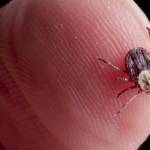Equine Piroplasmosis

Equine piroplasmosis is caused by protozoal parasites that infect a horse’s blood. Natural transmission is by ticks, but the disease can also be spread by the use of contaminated needles or surgical instruments.
Some horses with piroplasmosis never appear to be ill, while others may show only minor weakness or loss of appetite. In severe cases, however, infected horses can develop sweating, reluctance to eat or move, fever, muscle weakness, colic signs, and labored breathing. Clinical tests show anemia and hemoglobin (red blood cell pigment) in the urine of infected equines. Some horses die within a day or two of becoming ill, while others recover over a period of weeks or months.
Even after returning to what appears to be a healthy state, infected horses continue to carry the protozoa in their blood. Ticks that feed on these infected horses and then bite uninfected animals are able to spread the disease to other equines. No protective vaccine has been developed.
Babesia caballi and Theileria equi, the protozoa that cause piroplasmosis, are found in parts of Mexico, Central America, South America, Asia, Europe, and Africa. Japan, Australia, England, Ireland, and Canada are believed to be free of the parasite as it occurs in nature. Recently, T. equi infections have been identified originating from south Texas and this disease outbreak is still being investigated. Isolated cases have also been reported in Florida and Missouri in recent years.
Imported horses are quarantined and tested to protect equine populations in countries where piroplasmosis has not been found. The test now in use is more reliable than a procedure used before 2005, and some horses imported to the United States prior to that year have proven to be asymptomatic carriers of piroplasmosis. Only a few tick species found in the U.S. are able to harbor the protozoa that cause piroplasmosis, and little evidence has been found to indicate transmission by ticks in this country.
New cases of piroplasmosis in the U.S. can be minimized by testing of imported or relocated horses; quarantine and monitoring of known cases; and proper hygiene protocols (using only sterile needles, syringes, and tattoo equipment).








